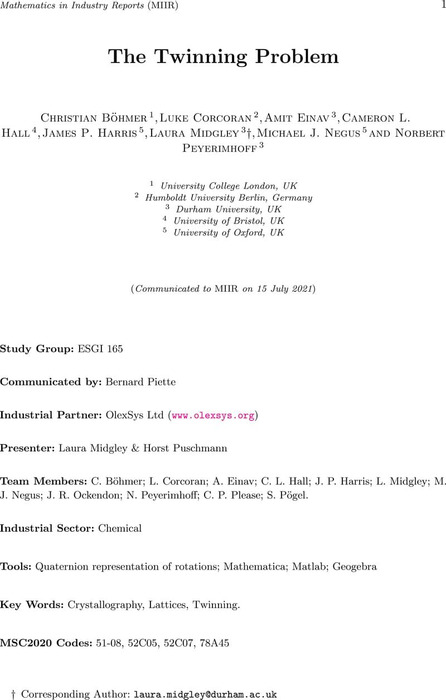Abstract
In the field of crystallography, some crystals are not made of a single component but are instead twinned.In these cases, the observed intensities at some points in the lattice will be far larger than predictions. If we find the rotation associated to the twinned component, we can model this twin and improve our agreement with observations.
In this report, we explore many routes to improve the process of identifying twins:
Generation of fake data for better understanding and accurate testing.
The representation of a rotation as defined by an axis and angle.
The representation of a rotation as a quaternion.
Using lattice points which must be equidistant from the origin to create our viable rotations.
An algorithm focused on restricted possibilities.
An exploration of 2D lattices for which twinning is mathematically impossible.
We find that there is much to be investigated in the field of twinning.
Content



![Author ORCID: We display the ORCID iD icon alongside authors names on our website to acknowledge that the ORCiD has been authenticated when entered by the user. To view the users ORCiD record click the icon. [opens in a new tab]](https://www.cambridge.org/engage/assets/public/miir/logo/orcid.png)

